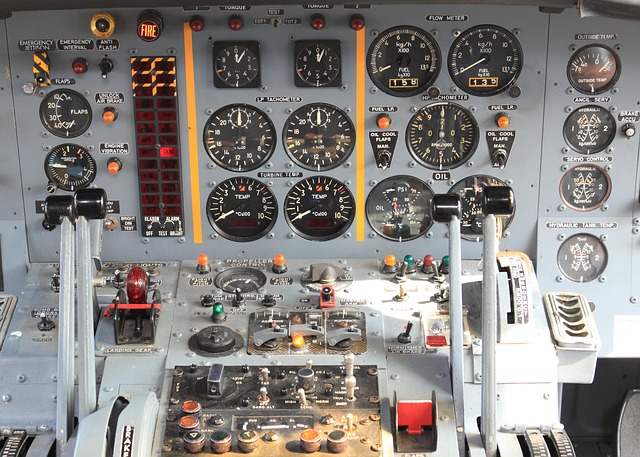
Photo from Pixabay.
You can picture the scene. It’s 2012, and the designer bursts into the morning meeting at a major automotive manufacturer, his eyes rolling, his tie askew. He slaps a bunch of photos upon the desk and cries out, “This changes EVERYTHING!”
His peers crane their necks and gasp. It’s the interior of the new Tesla Model S, with its laptop-sized screen… and not much else. Where are the much-despised buttons, switches, knobs, that have been cluttering up their creative landscapes for decades? Gone at a stroke! What has Tesla DONE?
The birth of the trend almost no one wanted
Of course, it didn’t happen quite like that: the tendency toward touchscreens in cars was already in full flow in the early 2010s.
Nevertheless, the arrival of the Tesla Model S added a big electrified push to a horrible car design trend: that of ditching the switchgear and bunging every possible control into a touchscreen menu.
Soon, every manufacturer would be jumping on this brand-new bandwagon, leading to a generation of cars that delegate the simplest functions into glitchy, fiddly, distracting touchscreens.
Why? As we see it, there was an unholy confluence of factors:
- Designers saw their minimalist fever-dreams realised. Now you could drive round in the equivalent of a sleek Scandi-style penthouse, all gleaming surfaces and flowing lines, the sort of place owned by a Danish tech entrepreneur with abs.
- Bean-counters, and hence CEOs, were ecstatic at the prospect of binning their expensive physical switches.
- Marketing teams were convinced this would be the next wave. Because, because, because it makes your car more like a phone, and people LOVE their phones.
The thing is, it’s difficult to resist an industry-wide momentum. And it’s easy to characterise someone who does as a Luddite, a fuddy-duddy who can’t adapt.
And so, sealed off in their echo chamber, manufacturers have foisted a trend on car buyers that very few ever wanted.
The exceedingly obvious problem with touchscreens
Yet, you don’t need to be Einstein (or Nikolai Tesla) to figure out the glaring problem with touchscreen controls. In order to do something – such as changing the car temperature- you need to look at the screen for longer than you’d look at a physical control. Screens can’t show all their functions at once, so controls inevitably need to be organised into menus that require visual navigation. Of course, as you become more familiar with a menu system, you will navigate faster, but that’s unlikely ever to be as quick as accessing a physical control – which in some cases can be located just through muscle memory.
Equally obviously, the longer you look away from the road, the more likely you are to have an accident. Some school-level arithmetic illustrates this. Let’s say that operating a touchscreen results in just one extra second of distraction. In that time:
- At 30 mph, your car travels about 13 metres.
- At 70mph, your car travels about 31 metres.
Actually, we can do better than that nominal one second, because Auto Express comprehensively tested ten different cars. Three drivers were asked to do touchscreen tasks while driving in a simulated urban environment. Autocar then took an average of their ‘distraction times’.
You should definitely check out their full article, but for now we’ll just quote one result – the time it took to find and switch off the lane assist. In the best-performing car (a Skoda), this took the drivers an average of 6.6 seconds. In the worst-performing car, a Genesis, it took a glacial 22.6 seconds.
Granted, this was by far the most distracting and difficult-to-find function in the test, but we’ve quoted it because we can easily make a comparison to using a physical button. One of our team recently drove an Opel hire car with a lane assist button. After a couple of journeys, he could switch this just by muscle memory and a lightning-fast visual check.
The backlash begins…
In a rare display of unity, three different groups have all been critical of the touchscreens-for-everything trend:
- Countless new-car reviews by journalists have complained about the lack of switchgear.
- In 2022, a What Car? survey of 1428 drivers found that 89% preferred physical buttons.
- The European crash-testing organisation NCAP will only award its coveted highest safety ratings to cars that physical buttons for certain key tasks.
For the first two groups, the criticisms weren’t just safety-related. There was also the frustration of having to faddle around on a screen, when a simpler solution was already available.
The verdict was in, and it wasn’t favourable.
…and manufacturers have listened.
In fact, the chorus has been so loud that manufacturers can’t ignore it. Here’s what Volkswagen’s head of design Andreas Mindt has to say (quotes from Autocar):
“From the ID 2all onwards, we will have physical buttons for the five most important functions – the volume, the heating on each side of the car, the fans and the hazard light – below the screen… They will be in every car that we make from now on…
He went on to say:
“We will never, ever make this mistake any more. On the steering wheel, we will have physical buttons. No guessing any more. There’s feedback, it’s real, and people love this. Honestly, it’s a car. It’s not a phone: it’s a car.”
Amen to that. Let’s hope every other manufacturer gets the message.
